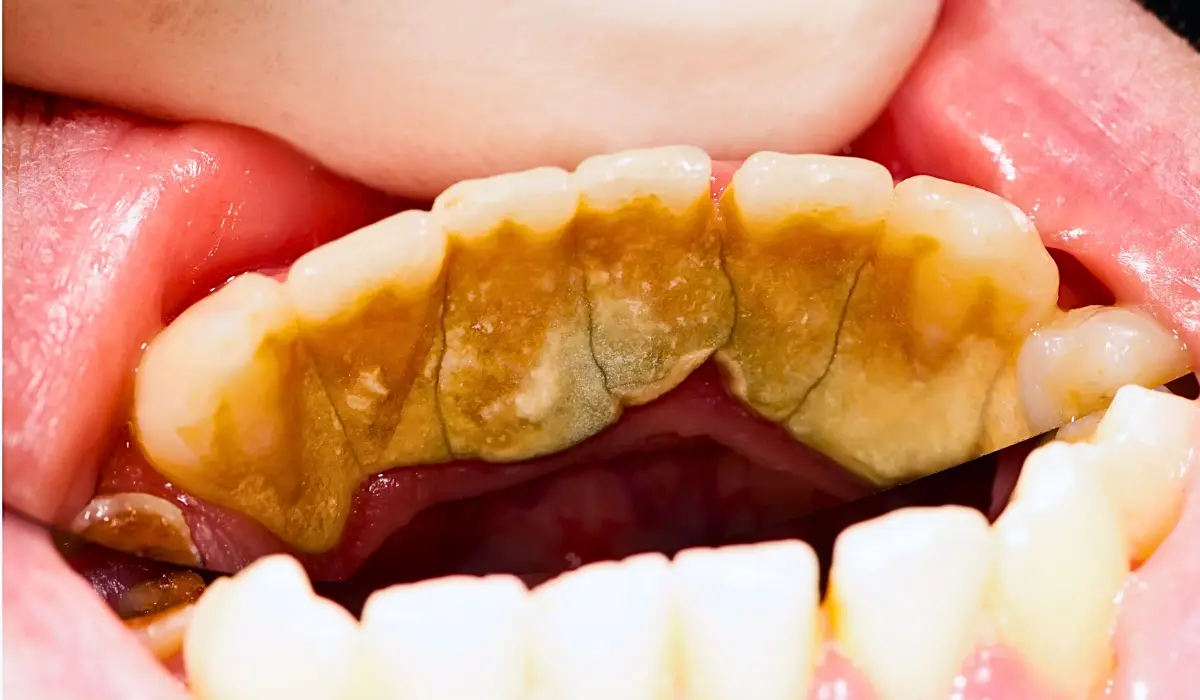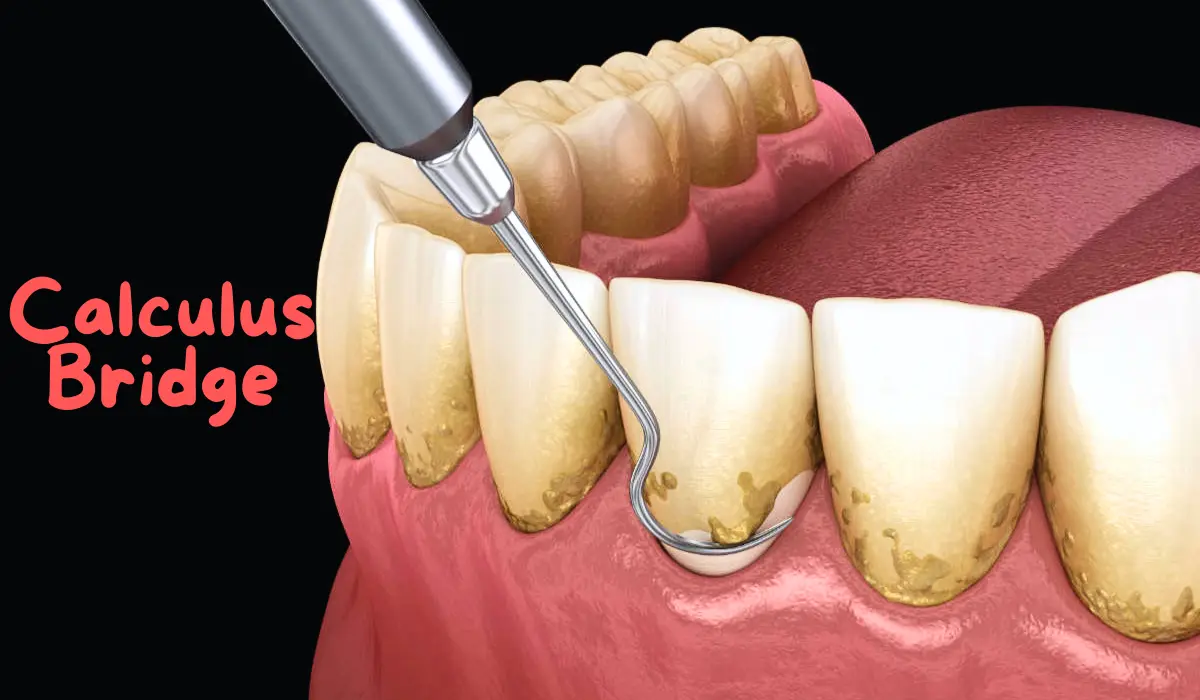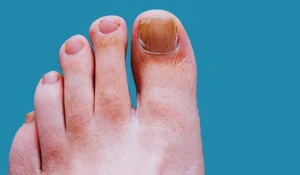Have you ever noticed a thin, sticky film that begins to coat your teeth? Are you a person who brushes your teeth right after a meal? If not, you might have noticed it. This thin, sticky substance is the plaque that commonly appears on the teeth.
However, if it is not removed properly, it can harden and develop into tartar or calculus. This calculus can spread to multiple teeth, forming a bridge. This article lets us discuss more about the calculus bridge, its formation, removal, and prevention.
How Does Plaque Transform Into A Calculus Bridge?
Plaque is a common substance that can form easily on your teeth. The consumption of starchy or sugary substances aids in the development of this sticky film. The acid released from the combination of the leftover food in the mouth and oral bacteria breaks down the carbohydrates in the food and beverages. The mixture of these bacteria, acids, and carbohydrates covers the teeth, forming plaque.

However, this plaque will not go away by itself and will also harden into tartar if not removed through brushing or flossing within a specific period. This hardened dental plaque is often referred to as calculus.
The transformation of plaque to calculus occurs in 1–14 days from the formation of the plaque. It is hazardous, as it will not merely remain on your teeth. It will start growing and penetrate your gumline. The calculus, which appears as a tan or brownish substance on the teeth, can cause gum disease and tooth decay.
Unlike plaque, calculus is visible and varies in color depending on its position in the mouth. It is typically yellow when found above the gumline and dark brown, green, or black when found below the gumline.
What Are The Side Effects Of A Calculus Bridge?
Halitosis
Calculus bridge can cause a smell in your breath, resulting in a condition called halitosis. Halitosis is more severe than ordinary “morning breath” or breath after specific meals, and it cannot be resolved by mouthwash, mints, or brushing your teeth.
Gingivitis
Calculus can cause gingivitis. The redness and inflammation of the gums are referred to as gingivitis. It first appears as bleeding while brushing or flossing your teeth. This can later turn into more serious conditions, like periodontitis if left untreated.
Cavities
The bacteria from your toothbrush will be shielded by the tartar. Additionally, it causes tiny holes in the enamel of your teeth, letting germs and acid leak into your teeth and causing cavities.
Receding gums
It is a type of periodontal disease. When affected by this condition, your gums will start to recede from your teeth due to the decay of the connective tissues, exposing your teeth and allowing the bacteria to seep into the gaps.
Tooth loss
If left untreated, calculus can result in tooth decay and tooth loss.
How To Remove A Calculus Bridge?
A professional dental cleaning can help remove all or the majority of the calculus bridge.
However, professional cleaning will not be enough if the calculus bridge has reached below the gumline. In such situations, a dentist removes the hardened plaque with a tool called a dental scaler.
A process called root planning will be followed after the scaling to smooth up the root surfaces. Additionally, there are ultrasonic devices used to eliminate the calculus bridge. Sometimes multiple sessions of dentist visits will be required to rectify the issue in diverse cases.
How To Prevent A Calculus Bridge?
The major prevention method against calculus bridges is maintaining proper dental hygiene. It is important to remove the plaque before it hardens into tartar. Using a tartar-control toothpaste can also help to prevent the calculus bridge.
Smoking and the use of tobacco can cause serious oral problems. The excessive use of alcohol also weakens gum health. Therefore, maintaining a healthy lifestyle is important to prevent oral diseases.
Some of the recommendations for oral hygiene by the American Dental Association (ADA) include:
- Brush your teeth twice a day using fluoride-containing toothpaste, at least for 2 minutes each.
- Interdental cleaning, which includes flossing, is important to clean the debris present between your teeth.
- Reducing the intake of sugary drinks and snacks will reduce the bacteria attack in your mouth.
- A regular dental checkup will help identify and rectify oral problems in the early stages.
Conclusion
The accumulation of dental calculus over several teeth is called a calculus bridge. It is caused by the accumulation of dental plaque over time. The plaque changes into a harder, thicker substance that gradually spreads over multiple teeth and gumlines. If left untreated, the calculus bridge can cause several problems, such as gum diseases, tooth decay, halitosis, or periodontitis.
The calculus bridge can be removed with the help of a professional dentist. It includes several procedures, like scaling and root planning. Maintaining proper oral hygiene and regular dental checkups will help to avoid calculus bridges and other oral problems.
References
- “Oral Health: A Window to Your Overall Health” – Centers for Disease Control and Prevention (CDC) Link: https://www.cdc.gov/oralhealth/index.html







